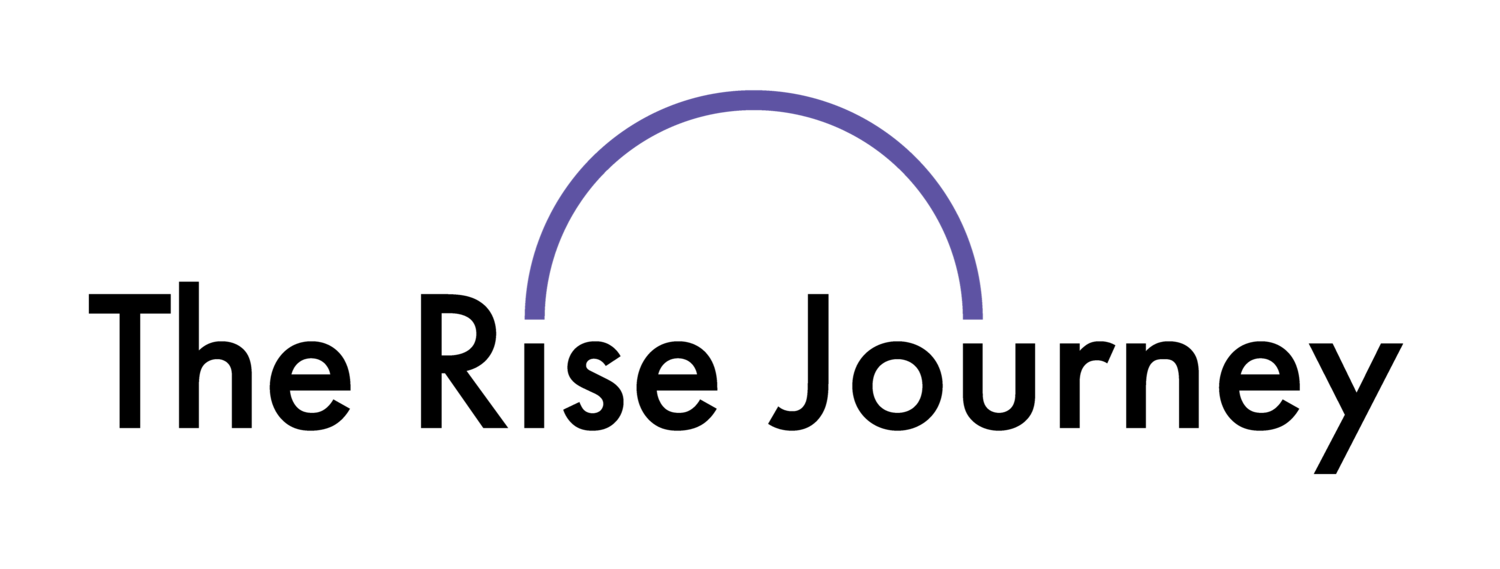Navigating Organizational Change as a Leader
Diverse team members smiling and laughing with each other.
Table of Contents:
The Human Brain and Change - Understanding what your emotions and feelings of stress mean
The role of leadership in guiding and navigating organizational change
How leadership’s resistance to change in the workplace shows up in the workforce
How embracing organizational change supports leaders in managing diverse teams
The impact of diversity, equity, and inclusion (DEI) work has been under question after DEI professionals have spoken out about how universities and corporations have been resistant to fully committing to navigating organizational change within their workplaces.
Anti-DEI groups in the United States have also put additional pressure on DEI to be disbanded - yet, even with the increased resistance to inclusion work, we’re confident that DEI work is far from being put to a close.
“In the end, DEI training can’t squelch implicit bias; nothing short of changing people’s life experiences can do that. But when done right, implicit-bias education can alert students to the fact that people committed to equality nonetheless hold biases. And that knowledge can, in turn, motivate them to reshape their workplaces to counter discrimination by democratizing key parts of the career system.”
The Wall Street Journal article 'Why DEI Training Doesn’t Work—and How to Fix It' states that further education on implicit bias and equity on a systematic level is an integral part of motivating workplaces and leaders to commit to DEI work and organizational change.
There’s no way to force people to truly acknowledge, understand, and adapt a learner’s mindset to recognize the importance of deconstructing inequitable systems. At the end of the day, what DEI work is asking people to do is to rewrite their values, ethics, and beliefs. Additionally, as The Wall Street Journal research found that shame and threatening legal repercussions do not work in motivating true organization-wide change that centers inclusion and equity.
So what are we missing?
We think a major step often missed in DEI training is the need for education on what it means to navigate organizational change, or change at a personal/ individual level.
The human brain is hardwired to resist change - to perceive the unknown as scary, not secure, and even as a ‘threat’ to your safety. We believe that a necessary step to adapting DEI work is helping people to understand that their feelings of fear, anxiousness, anger, or stress are completely normal signals from their brain telling them that change is coming, kicking their feelings of self-preservation into gear as a response to fear. Once an individual is able to finally see that change and learning don’t have to be scary, shameful, or unpleasant experiences, they will be more prepared to carefully navigate their emotions, reflect on their experiences, and then better navigate change within themselves and with others.
The Human Brain and Change - Understanding What Your Emotions and Feelings of Stress Mean
“We’re happiest as human beings with routines. When we feel confident with our place in the world, one of our brain’s core neurochemicals, serotonin, stabilises. Change any of those elements and we can disrupt our serotonin levels. Too much or too little serotonin can make us feel anxious or depressed.”
Peter Burow, Founding Partner and Chair of NeuroPower Group describes our brains’ innate response to change, best:
One of the biggest challenges many people face when adapting to new information is trying too hard to figure out how it applies or validates to their current perception of the world - And then, disproving this information when it does not align with their reality.
When, in actuality, our brains are constantly changing to adapt to new information. You may not understand this information in the current mindset and level of understanding that you are at now. But when you study, reflect, and research this information, your brain will have changed to be able to adapt to new learning and to have a more expanded perspective.
Physical feelings of stress and fear of change to things we don’t understand or the unknown are the greatest blockers to expanding your mind.
When you adopt a learner's mindset that is agile, flexible, and open, understanding yourself and others gets easier. You can learn to enjoy meeting new people and encountering new perspectives and change in general, instead of feeling stress and that newness threatens your sense of self and security.
So if there is a topic of discussion that makes you uncomfortable and feel easily ‘triggered’ (which often happens in DEI work) - trust that while you may have difficulty understanding this topic of thought currently, if you provide yourself with the tools, the right resources, and care - you can in the future. You have the capability to understand more, and to feel at peace discussing these ‘triggering’ or uncomfortable topics.
As a workplace leader navigating organizational change in the workplace, once you are able to acknowledge your brain’s natural response to change or new information, you are able to take the steps to then choose what response you’d like to have to this information that practices consideration to others and overall helps you to become a better leader.
The role of leadership in guiding and navigating organizational change
Happy diverse team outside of the office.
One of the largest hurdles DEI work faces is getting leadership fully onboard and prepared to manage diversity, equity, and inclusion conversations on the day-to-day and to enact these practices within their communication and workplace culture.
Organizations can put their managers through all of the best training and workshops on how to be inclusive but without the deep-rooted understanding of how to manage their own complex emotions on change and how their identity plays a role in upholding systematic barriers in our communities, we can’t expect them to learn how to manage different types of employees with different unique experiences that contradict their own.
SHRM HR Magazine reported that a McKinsey & Co. and LeanIn.org survey found that in 2022, white men still make up the majority of management and C-suite roles, accounting for 40 percent of management titles and 61 percent of C-suite positions.
Systematically, white male professionals have intersectional privileges in the workplace that have allowed them to control and influence the employment experience and opportunities of others while promoting others of similar identities and those willing to conform to these inequitable practices.
Organizations need to encourage their leaders to want to better the workplace and our communities at the risk of the privileges they benefit from. Only then, will workplace leaders be able to adopt the agile and flexible open mindset that allows them to acknowledge the inequitable systems at play, and play a greater part in leading a workplace that deconstructs these exclusive practices - and facilitate true organizational change based on DEI.
How leadership’s resistance to change in the workplace shows up in the workforce
Leadership’s resistance to organizational change looks like:
Exclusive or inequitable promotion and hiring opportunities and lack of diversity within a workforce. Are all of your employees made aware of and given the same development opportunities and consideration for promotions?
Inequitable compensation between employees of different identities. Marginalized identities face significant wage gaps at work, but are expected to outperform or do the same work as their privileged counterparts.
Toxic Workplace Culture facilitated by authoritarian leadership. Authoritative leadership is, “ is a management style that is based on the presumption that the person in charge possesses greater knowledge than their team members.” Managers and leaders resistant to change often create a work environment that feels like a hierarchical system and one that does not value diversity of thought.
Diversity Ditching. When organizations are quick to abandon or cut back on DEI initiatives in the face of workplace and financial challenges
Resistance to flexible workplace practices
Employees feel they can not be their authentic selves
How embracing organizational change supports leaders in managing diverse teams
When managers or leaders understand how to navigate organizational change and their emotional response to change, they are able to lead inclusively.
Inclusive leadership is defined as “the capacity to manage and lead a heterogeneous group of people efficiently while respecting their uniqueness in an empathetic, bias-free way.”
In practice, it looks like:
A team that is adaptable and can handle change on the fly
A connected and communicative workforce. Employees have built relationships with one another and maintain mutual respect and consideration when communicating, even in times of difference.
Trust, employees feel secure, engage at work and communicate honestly with each other and leadership. This may look like representative data on surveys …
A leader who values and is able to carefully consider experiences and ideas different from or contradicting their own
Reward and positive recognition to those who’ve communicated honestly
In DEI work, it’s important that organizations make sure their leaders are mirroring their commitment to building an inclusive workforce in how they lead inclusively, with empathy, and authentically for these changes to be successfully reflected across the entire organization.
Additionally, learning how to communicate with employees, and people with different identities and experiences through change is crucial to the success of any change management initiative.
True transformative change requires leaders to have an expansive mindset and a willingness to adapt, all while maintaining a sense of transparency and openness. In order to facilitate organizational change, leaders need to be equipped with extensive communication skills to guide their teams through the process of learning and adapting new and challenging information. The key is to prioritize honest communication and empathy, making sure that everyone understands why the changes are necessary, and guiding them through the process of how to embrace learning with an open mind.
Address organizational change head on with The Rise Journey
As leaders, it's essential to continuously develop our skills and stay on top of best practices for navigating organizational change, supporting our teams, and managing our own well-being.
Check out our full list of consulting services, blogs, and over 80 expert-led Lunch & Learn sessions focused on leadership, DEI, and navigating organizational change.
Have questions? Book time to chat with a member of The Rise Journey's team to learn more about how we can help your team find the solution(s) that best fit the unique needs of your team.
Key Takeaways
DEI work remains crucial despite resistance, requiring education on implicit bias and equity for effective organizational change.
Understanding and positively responding to the brain's resistance to change is vital in navigating organizational shifts.
Effective leadership in DEI necessitates understanding and managing personal emotions and biases for fostering inclusivity.
Leadership resistance to change can lead to inequitable practices and a toxic work environment, emphasizing the need for flexibility and openness.
Inclusive leadership involves adaptability, transparent communication, trust-building, and valuing diverse perspectives, all essential for successful change management.


